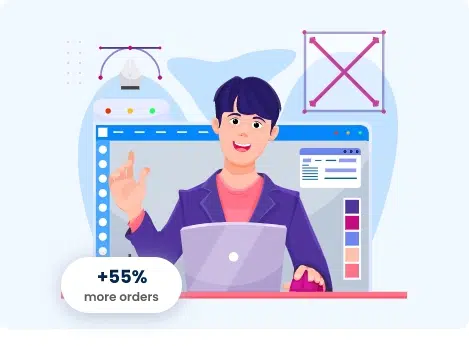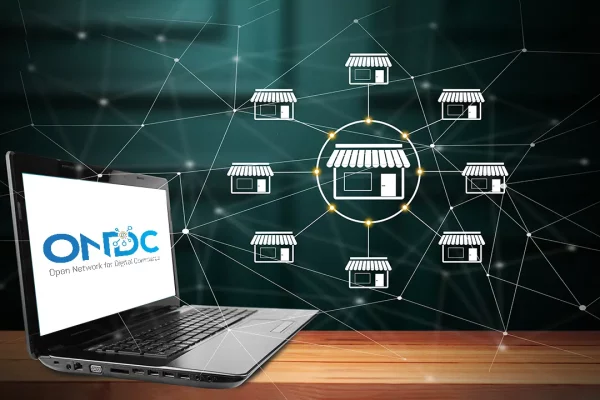Although the word “e-commerce” is not new, the epidemic has only increased the trend of online buying. E-commerce business is attempting to entice customers more than ever by offering discounts, personalisation, and prizes, a trend here to stay—the only constant changes.
The worldwide epidemic has altered consumer behaviour and demonstrated how technology could generate revenue even while customers are confined to their homes. As per the research, once the pandemic hit, there was a double-digit rise in average online spend on electronics and accessories (39%), mobile and accessories (12%), and fashion, comprising clothes, footwear, and accessories (10%).
However, digital innovation, growing globalisation, and changes in consumer purchasing patterns have sent the fashion business into a tailspin. And, as a result of the coronavirus’s hastened retail catastrophe, the fashion industry is more volatile than ever.
Ecommerce business fashion industry: Trends
- The worldwide fashion e-commerce business was predicted to fall from $531.25 billion in 2019 to $485.62 billion in 2020. The coronavirus pandemic is primarily responsible for the -8.59 per cent compound annual growth rate (CAGR). On the other hand, the market is expected to rebound and reach $672.71 billion by 2023. In 2020, the e-commerce fashion sector will account for 29.5 per cent of total fashion retail sales in the United States. However, the US market is expected to take a big bite out of worldwide forecasts, reaching $100 billion by 2021. Five key opportunities are driving this expansion:
- Expansion of global markets outside of the Western Hemisphere
- Increased web access and smartphone adoption
- Globally emerging middle-classes with discretionary income
- Developing cutting-edge technology to enable experiential e-commerce
- Using celebrity and influencer culture to your advantage
- Lowering the digital barriers to entry for all apparel businesses opens up the possibility of marketing, selling, and fulfilling orders internationally and automatically. As a result, both global revenue and revenue per user (ARPU) are expected to rise. Over a year, each European consumer is anticipated to spend $921 on fashion-related products. However, while absolute apparel sales are increasing, global revenue growth (as measured by compound annual growth rate) is decreasing, falling from 15.3 per cent in 2018 to 7.6 per cent by 2022. The fashion e-commerce market is expected to grow at a 3.3 per cent CAGR between 2017 and 2024.
- Not surprisingly, while still expanding at a faster pace, the bags and accessories category will see its double-digit growth—15.6 per cent in 2018—dwindle to 8.7 per cent by 2022. Despite having the smallest absolute numbers, such predictions make bags and accessories one of the healthiest areas in e-commerce fashion.
- Fashion retailers may incorporate Netflix-like customisation into the onsite experience by tracking user activity, session by session or account by account. Although this may begin with product recommendations (i.e., if you viewed or purchased this, you might want to watch or purchase that), real customisation extends to the graphics used to display products: Netflix personalised programme visuals depending on a user’s previous viewing habits. It’s a feature that generates $1 billion in client retention value each year. Ecommerce stores can be customised to match onsite activity or purchasing history. Shoppers in the online fashion sector will demand the same level of customisation in the future of e-commerce.
- The coronavirus epidemic shattered last year’s fashion e-commerce business expectations. When worldwide lockdowns were implemented in March 2020, 27 percent of US customers indicated they intended to spend “slightly” or “a lot” less on luxury and fashion products than they had previously budgeted. Despite this, the number of fashion internet stores has increased dramatically. Brands such as Zalando reported a 32–34 per cent increase in GMV during the second quarter of 2020. During the same time, UK retailer Boohoo reported a 45 per cent rise in revenue across all of its (mainly online) apparel brands. So it’s no surprise that over half of global fashion businesses haven’t changed their online strategies since the COVID-19 epidemic began.
- One trend that will stick with customers after the pandemic and shifting consumer attention on sustainability and conservationist behaviour is thoughtful shopping. This is bad news for fast fashion clothes manufacturers, whose business plan depends on their customers making rapid repurchases at frequent intervals. As a result, fast fashion garment businesses require a rethinking of their business strategy, which asks for long-term, successful business practices in the face of evolving customer views. With customers realising the significance of ‘less is more’ in garment purchasing, resulting in slower fashion cycles, the model will be based on demand created from the consumers’ end rather than the old paradigm. Many companies have already made the required modifications in response to shifting consumer behaviour. In addition, partnerships between brands and supply chains will grow stronger as the epidemic exposes the industry’s flawed structure.
- Over the last several months, we have seen customers become more comfortable with utilising digital methods for purchasing and have responded well to various media for engaging with the business. As the possibility of humanity slipping into yet another very possible pandemic crisis looms, the ecommerce business must stress sustainability and the ethics of doing business. Consumers are looking for thoughtful methods to indulge in any type of purchasing. This type of growth in consumer collective awareness is the result of many discourses promoting a sustainable lifestyle, moulding and influencing the public’s minds at the same time. This activism will only gain pace in the coming years, as Gen-Z will account for about 40% of the global consumer population. Furthermore, it is the most outspoken group on social media on topics about the socio-political arena. The informed customer is prepared to pay a premium for items that have been ethically sourced and made. They now want transparency and accountability from companies and will not be afraid to speak out about unethical acts carried out by their favourite brands. With individuals still hesitant to venture out in public, companies will have to cut to the chase by delivering the real experience online.
Conclusion
We will see an increase in new store formats as the e-commerce business makes changes to existing forms to simplify the buying experience as much as possible for their customers, providing their omni channel offerings to select from. Thus, the outlook for fashion businesses in the post-cold-war period is bright as long as brands are quick and adaptable in implementing substantial changes in their operations. The customer experience will be the trump card in the fashion industry, and every strategy will attempt to optimise the consumer’s expertise innovatively.







